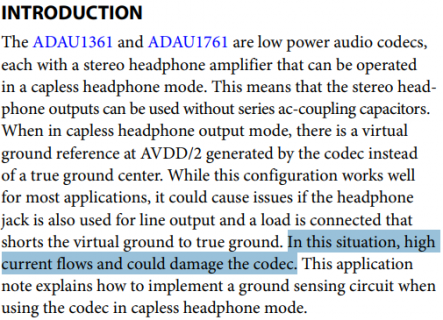To answer my earlier question why there is this prohibition, a quick google search leads me to another product's application note which says the reason is because a high current between the grounds could damage the codec:
View attachment 22257
Did you experience any damage or degradation to your synth's headphone output sound quality after using your hack of connected VGND to GND?
I took the risk to experiment with this and I guaranty that I do not have any problem by connecting the VGND to GND to my project. The only result was to have clearer sound . The reason that I took the risk was because with that much noise my project was useless . Also as I use this project in a very loud situation (live gigs in a bar) I found that I could hear and other kind of noises like clock sync so I found that I had to short another two pins together (pin 10 + pin 11) to get read also from this kind of noise . In this image you are going to see how I short them together https://imgur.com/ksMECm5 . I am not an expert, however as I described before I had to find a solution immediately as I had to use it in a very loud place, so I do not know what I did exactly however it works perfect with no problems and damages. With this two hacks I manage to have a very silent project that is usable for me . Here is my project that still alive https://imgur.com/h96Blzy


